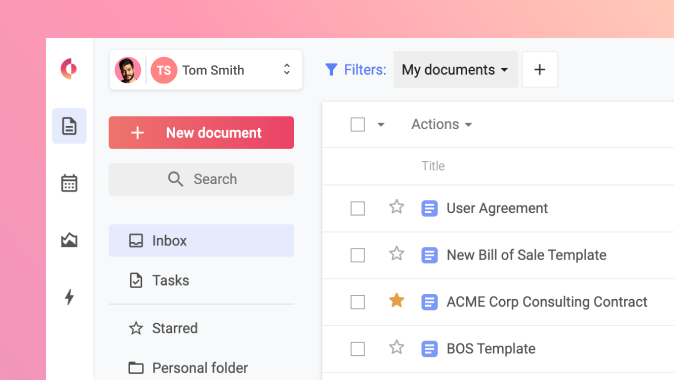Internal Selling: How to Empower Advocates in an Organization
Part of the role of Legal and key stakeholders of agreements is aligning an organization around prioritizing their contracts. From Marketing to Operations, all teams work with contracts. Yet Legal is typically the main advocate behind their creation and management. And with Forbes reporting 70% of organizational change efforts fail, it’s critical for Legal to approach the optimization of their contract processes carefully. To truly improve how agreements are being made and their impact across an organization, advocacy needs to spread beyond just Legal.
Here are three ways to empower advocates in any business. With these change management tips, contracts can be reframed as more than just documents, but the core elements of potential and progress in a company.
1. Build the case.
Consider total cost of ownership, time to value, and how organizational adoption will impact the company. Proving teams will be better off by placing a higher focus on their agreements will increase the possibilities of successful adoption actually happening. Showing the benefits of tools such as a contract lifecycle management platform through data and metrics will unite teams around the need for a simpler process.
Listening to these teams and stakeholders is a key part of building the case. Understanding current pain points will help the focus of conversations and proposals be personalized to an organization’s needs in every team. Identifying advocates in every team will help communicate to these specific pain points well in order to increase awareness around processes and tools.
2. Buy technology for humans.
Technology is a key part of transforming businesses, and business leaders recognize its importance. KPMG reported 85% of leaders are looking to adopt advanced digital technology in the next two years. Yet technology is only as good as the internal adoption. Technology can either be an incentive or deterrent, depending on the employee and their experience. While training and communication are part of empowerment, the first step is ensuring the technology bought is intuitive and human-centric, allowing all team members, regardless of their prior experience with technology, to have a natural path to understanding.
3. Train and communicate well and often.
After the case is made and technology is in place, training is key. Regardless of how intuitive technology is, creating excitement and adoption around new processes involves training. In addition, feedback and suggestions for how to improve processes should be continuous. Just as listening was a key part of building the case across an organization, understanding people’s needs remains paramount as processes roll out.
With these techniques, the vision of new and exciting possibilities through agreements can become a part of everyday processes. Contracts are more than just paperwork—they are the key to opening up potential and progress. A new mindset around agreements allows teams to make these amazing things a reality.



